View on Seine from Pont de l'Alma
Vue sur la Seine depuis le pont de l'Alma
© Brown University Library
FRA
à proximité de Paris
Télécharge images...
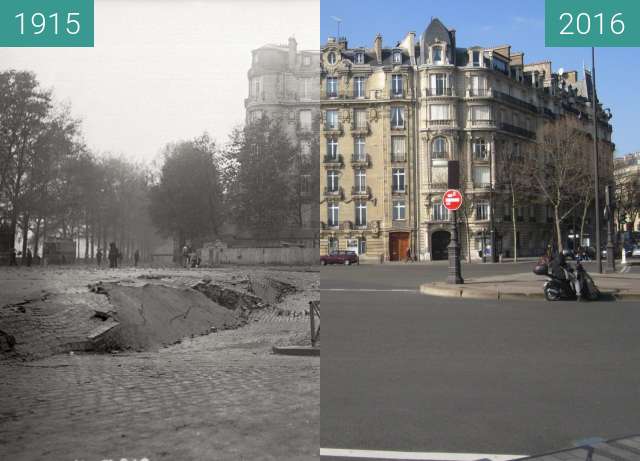
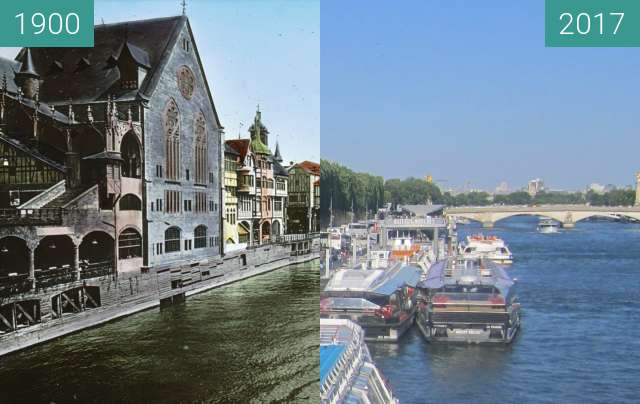
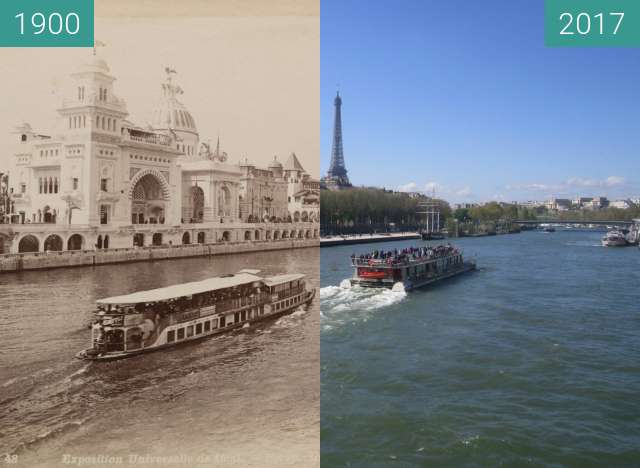
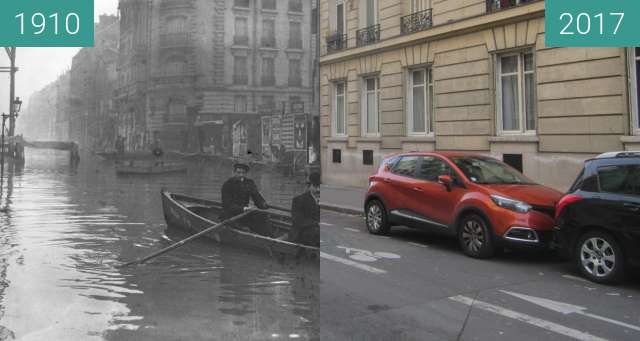
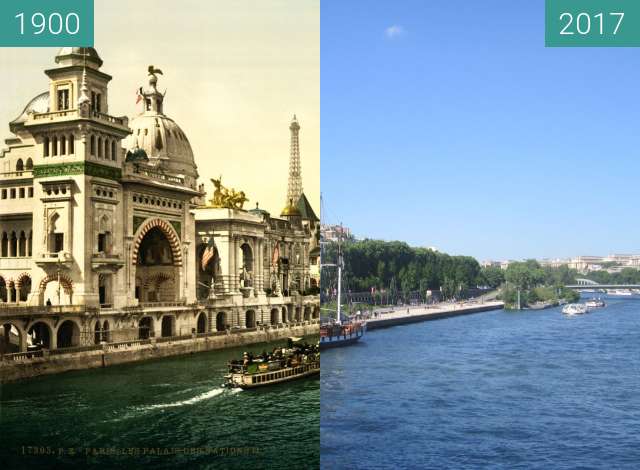
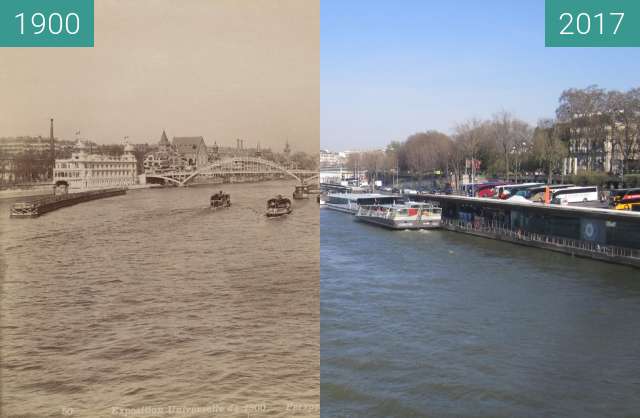
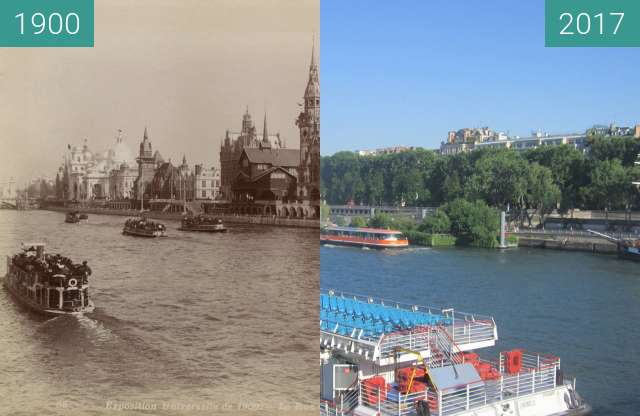
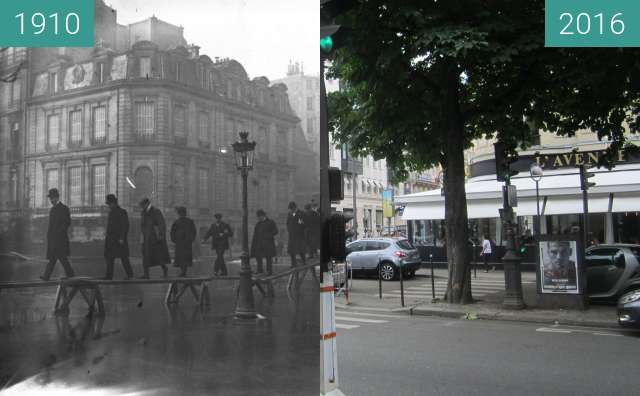
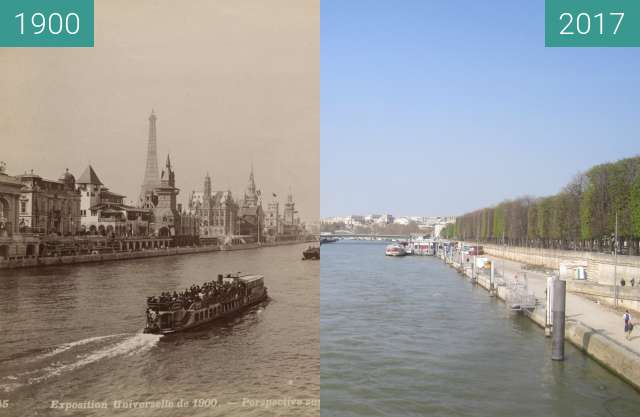
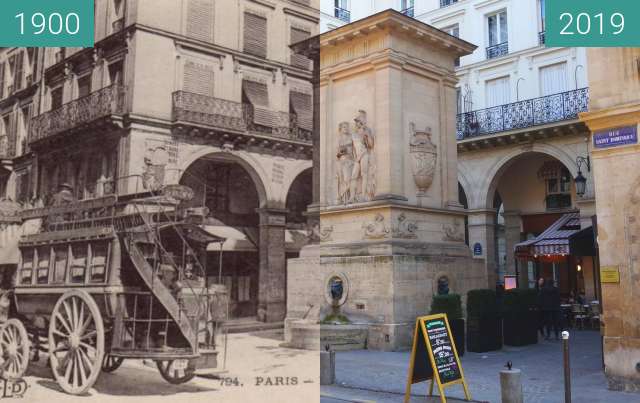
View of the Seine river during the 1900 Paris World Fair. On the right side of the one can see the right bank of the Seine, where the "Vieux Paris" was located. The "Vieux Paris" was a selection of temporary buildings erected for the occasion and designed to give the visitor an idea of what the city would have looked like in the Middle Ages.
The buildings to be seen in the picture were part of the Renaissance quarter. Very striking is the tall building with the two towers ("Le Grand Châtelet"), whose style dates back to the time of Louis XII. (1462-1515).
As only survivor of the world exhibition of 1900 remains the pedestrian bridge "Passerelle Debilly".
Source: Wikicommons
Vue de la Seine lors de l'Exposition universelle de 1900 à Paris. Sur le côté droit, on voit la rive droite de la Seine, où se trouvait le "Vieux Paris". Le "Vieux Paris" était une sélection de bâtiments temporaires érigés pour l'occasion et conçus pour donner au visiteur une idée de ce à quoi la ville aurait ressemblé au Moyen Âge.
Les bâtiments visibles sur la photo faisaient partie du quartier de la Renaissance. Le grand bâtiment aux deux tours ("Le Grand Châtelet"), dont le style remonte à l'époque de Louis XII, est particulièrement frappant. (1462-1515).
Seule survivante de l'exposition universelle de 1900, il reste le pont piétonnier "Passerelle Debilly".
Source: Wikicommons